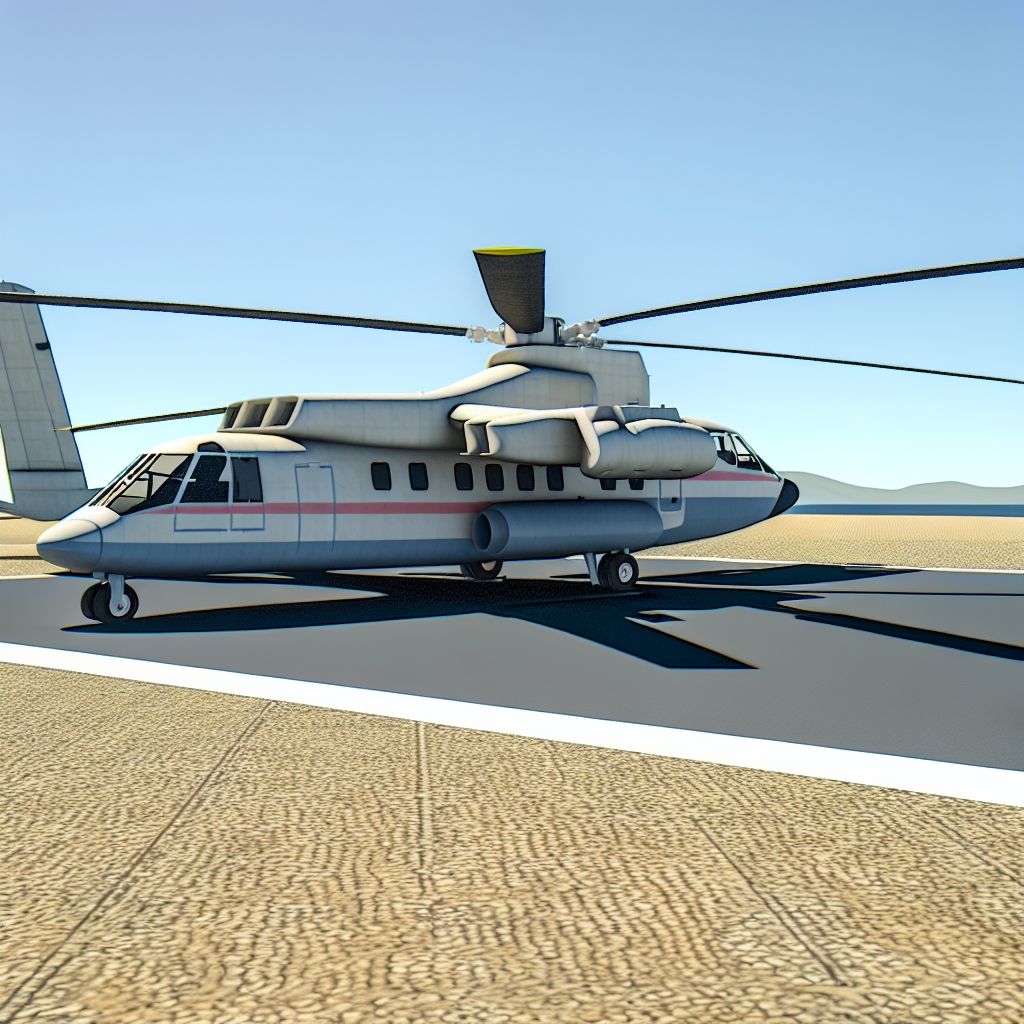Deutsch: Kipprotor / Español: Inclinarrotor / Português: Inclinação do rotor / Français: Inclinaison du rotor / Italiano: Rotor inclinato /
The term "tiltrotor" is primarily associated with aviation Technology rather than the Space industry. A tiltrotor aircraft is a type of aircraft that has the ability to take off and land vertically like a helicopter but can convert to a Standard fixed-wing airplane during Flight, which allows for higher speed and greater range. The key feature of a tiltrotor is its rotors, which can tilt from a vertical position for takeoff and landing, to a horizontal position for flight, combining the advantages of a helicopter's vertical lift capabilities with the speed and efficiency of an airplane.
In the Space Industry Context

While the term "tiltrotor" is not commonly used in the space industry, the concept of vehicles that can change Configuration to optimize for different phases of flight does have relevance, especially in discussions about future space exploration vehicles, reusable Spacecraft designs, and concepts for planetary exploration that require vertical takeoff and landing (VTOL) capabilities. However, as of my last update, specific applications of tiltrotor technology in the space sector are speculative and primarily theoretical.
Potential Applications
- Planetary Exploration: Future missions to planets with atmospheres, like Mars, might benefit from vehicles that can transition between flight modes to navigate the planetary environment effectively.
- Reusable Launch Vehicles: Concepts for future reusable spacecraft might incorporate mechanisms to alter their Aerodynamic profile, optimizing for different phases of Ascent and descent, similar in Spirit to the tiltrotor's Adaptability.
Challenges and Considerations
- Engineering Complexity: Designing a vehicle that can operate in the vastly different environments of space and atmospheric flight poses significant engineering challenges.
- Atmospheric Entry: For spacecraft returning to Earth or entering another planet's atmosphere, balancing the Heat shield requirements with any variable configuration, such as tilting parts, complicates design and safety measures.
- Propulsion Systems: Adapting or combining propulsion systems suitable for both space and atmospheric flight involves overcoming substantial technical hurdles.
Summary
While the tiltrotor concept is rooted in aviation, the idea of vehicles that can adapt their configuration for optimal Performance in different phases of flight has intriguing potential applications in the space industry. As technology advances, we may see innovative spacecraft designs that embody the versatility of the tiltrotor concept, especially in the context of planetary exploration and reusable space vehicles. However, any practical application would need to address the unique challenges of operating in the space environment.
Related Articles to the term 'Tiltrotor' | |
| 'Helicopter' | ■■■■■■■■■ |
| Helicopter: A helicopter is a type of rotorcraft in which lift and Thrust are supplied by horizontally . . . Read More | |
| 'Rotorcraft' | ■■■■■■■■ |
| Rotorcraft: A rotorcraft or rotary-wing aircraft is a heavier-than-air aircraft with rotary wings or . . . Read More | |
| 'Quadcopter' | ■■■■■■■■ |
| A quadcopter, also known as a quadrotor, is a type of unmanned aerial vehicle (UAV) characterized by . . . Read More | |
| 'Aviation' | ■■■■■■■ |
| Aviation refers to the Operation and design of aircraft and the Infrastructure that supports it, including . . . Read More | |
| 'Aeronautic' | ■■■■■■■ |
| Aeronautic: In the context of Aerospace, the term "aeronautic" refers to the Science and technology of . . . Read More | |
| 'Airship' | ■■■■■■■ |
| Airship: An airship or dirigible Balloon is a type of aerostat or lighter-than-air aircraft that can . . . Read More | |
| 'Takeoff' | ■■■■■■■ |
| Takeoff is the phase of flight in which an aerospace vehicle leaves the Ground and becomes Airborne. . . . Read More | |
| 'Rotor' | ■■■■■■ |
| Rotor: In the aerospace context, a rotor refers to a rotating Component in a mechanical system, such . . . Read More | |
| 'Experimental Aircraft' | ■■■■■■ |
| Experimental Aircraft in the space industry context refers to aircraft that are specifically designed, . . . Read More | |
| 'Cockpit' | ■■■■■■ |
| Cockpit: A cockpit or flight deck is the area, usually near the front of an aircraft or spacecraft, from . . . Read More | |
